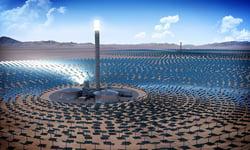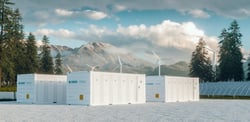Hydrogen propulsion is the use of hydrogen to create self-sufficient energy. Something called a fuel cell is built into the car and uses the chemical energy of hydrogen to produce electricity. When a simulated chemical reaction happens in the fuel cell, hydrogen breaks off an electron and sends that electricity to the car's engine to generate propulsion (moving forward). In addition to battery technology, this technology is an essential pillar in the mobility transition. The first hydrogen-powered cars are already in use. However, there are several challenges to overcome before large scale production, such as emission-free hydrogen production.
Overview of content
How does a hydrogen propulsion work?
How is hydrogen produced?
What challenges does the automotive industry face in using hydrogen technology?
What opportunities does hydrogen technology offer the automotive industry?
How does hydrogen propulsion ensure greater sustainability?
Which professions are involved in the development of hydrogen propulsion?
How does a hydrogen propulsion work?
The key to hydrogen propulsion is the reaction happening between hydrogen and oxygen. This process is known as reverse electrolysis and occurs in the fuel cell. The result of this reaction is heat, water and electric energy. The hydrogen comes from a tank built above the fuel cell in the vehicle. Electricity travels from the fuel cell to the engine while water vapour escapes through the exhaust. In simplified terms, it's a self-sufficient energy fueled car that does not require a storage system like a battery, all while being locally emission-free.
One crucial difference between hydrogen fuel cell cars and alternative electric vehicles is - Hydrogen cars produce electricity themselves.
How is hydrogen produced?
Since hydrogen is in a particular form, it cannot be mined or extracted like other fuels. Instead, it's split from more complex molecules. Currently, hydrogen production is through the so-called reformation of natural gas. Adding water vapour to the natural gas. Producing a chemical reaction, the products of which are CO2 and hydrogen.
The actual hydrogen propulsion does not produce any greenhouse gas emissions, but natural gas-based production does. The latter is still dependent on energy carriers - in this case, natural gas. Hydrogen produced in this way is called grey or black hydrogen.
In contrast, so-called green hydrogen is produced entirely without fossil fuel, raw materials. It is, therefore, seen as the energy carrier of the future, made by electrolysis. In this process, the hydrogen is separated from the water with the help of electrical energy and stored. The electricity needed for this comes from renewable sources such as wind or solar energy. The only waste product is oxygen, which can either be used or released into the environment, without any consequences.
What challenges does the automotive industry face in using hydrogen technology?
Both the actual hydrogen propulsion and hydrogen production have long been technically possible. The challenge is to make this technology applicable on a large scale. Sustainability means it must be possible to produce and transport sufficient green hydrogen. The restricting factor is the limited potential for the expansion of renewable energies. Moreover, electrolysis is a relatively expensive process.
The production of fuel cells is also expensive, as it requires platinum - a metal that is known to be more valued than gold, subsequently leading to research on how to reduce the need for platinum and recycle the material. Copper, a much more affordable material, is being investigated to help produce a more affordable fuel cell. In addition, a sufficient network of hydrogen filling stations must be established.




